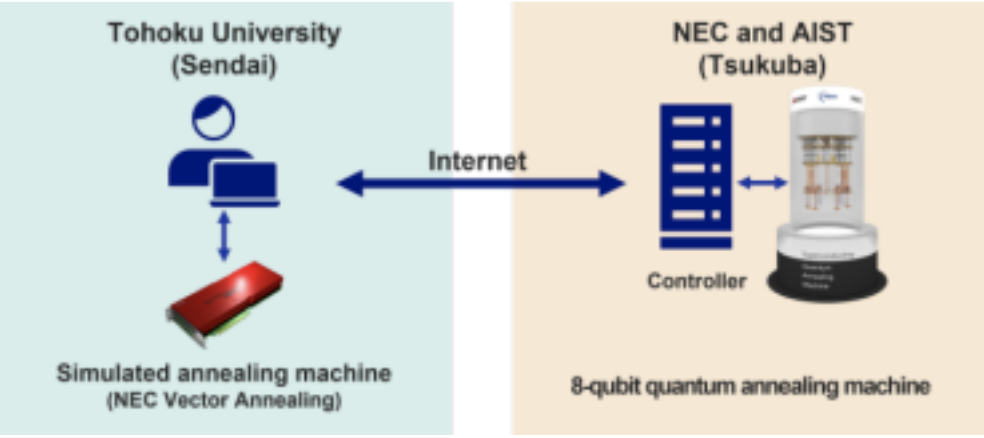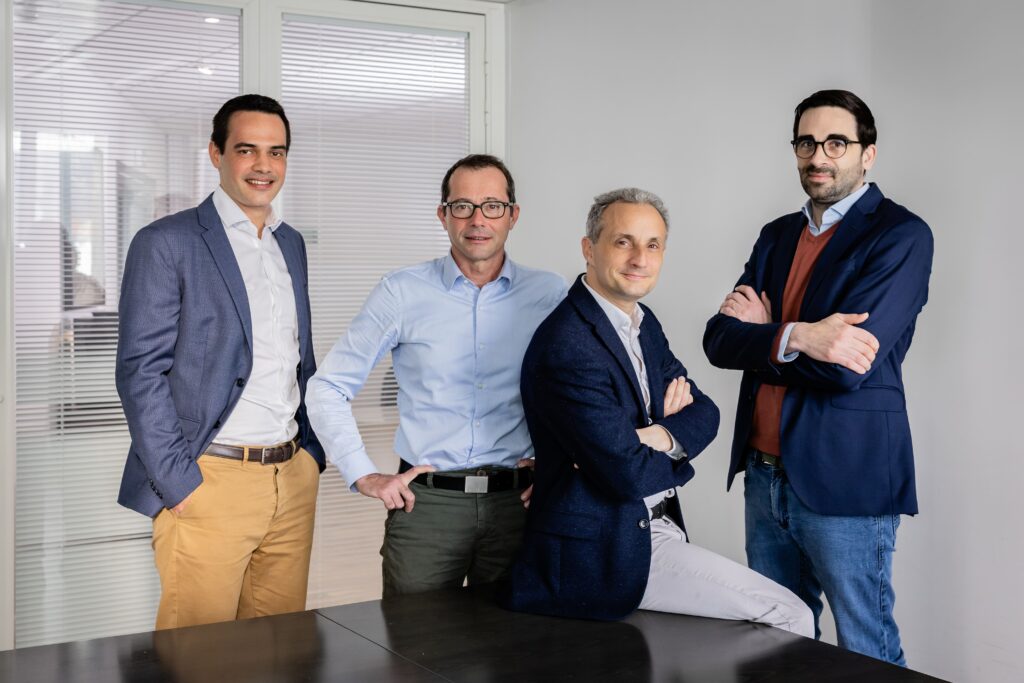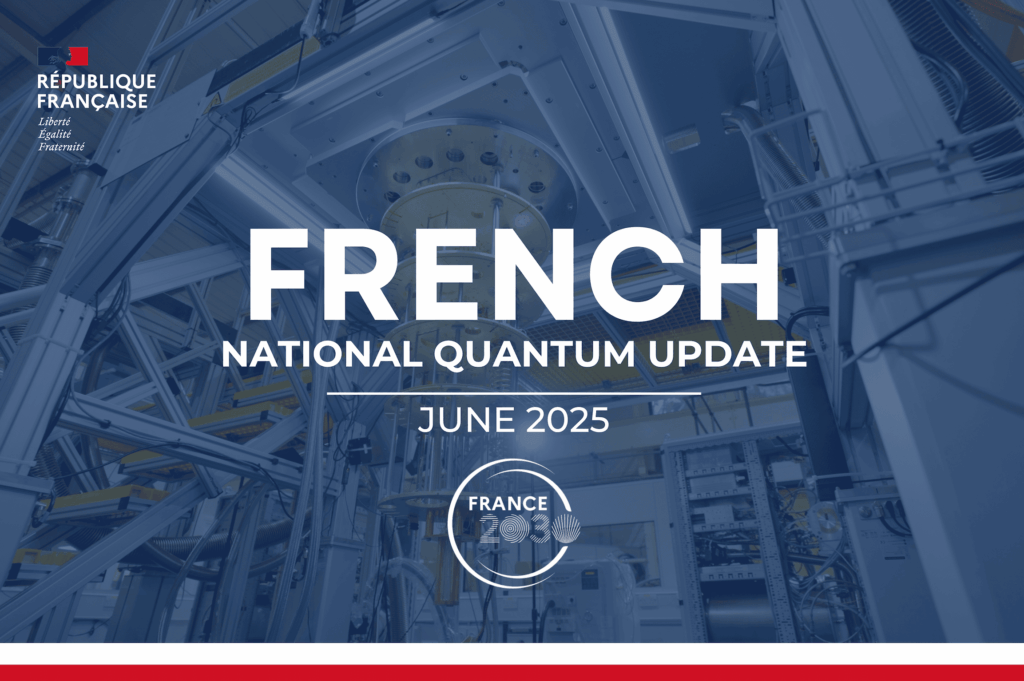Insider Brief
- Tohoku University and NEC Corporation have started joint research on computer systems using an 8-qubit quantum annealing machine.
- The 8-qubit quantum annealing machine used in this research has been newly developed using superconducting technology paired with the ParityQC Architecture.
- This is the first domestically manufactured quantum annealing machine in Japan with online access.
PRESS RELEASE — Tohoku University and NEC Corporation have started joint research on computer systems using an 8-qubit quantum annealing machine developed by NEC and Japan’s National Institute of Advanced Industrial Science and Technology (AIST).
The 8-qubit quantum annealing machine used in this research has been newly developed using superconducting technology paired with the ParityQC Architecture. Owing to this, the machine is resistant to noise and remains capable of scaling up to a fully-connected quantum annealing architecture while maintaining a prolonged quantum superposition state.
This is the first domestically manufactured quantum annealing machine in Japan that is accessible from the outside via the Internet. This joint research is also the first project to use this machine.

Features of the quantum annealing machine
Solving complex social issues entails deriving optimal combinations from a large number of options (solution of combinatorial optimization problems). To solve combinatorial. optimization problems at high speed and with high accuracy, NEC and AIST are developing a quantum annealing machine using superconducting parametrons.
Using superconducting parametrons makes this quantum annealing machine resistant to noise and enables a long coherence time (duration for maintaining the quantum state). Coherence time is generally shortened during multi-qubit implementation. However, in addition to the noise-resistant characteristic of superconducting parametrons, the machine is able to maintain a long coherence time even in multi-qubit implementation by adopting the ParityQC architecture, a coupling technology that is highly compatible with parametrons. These features enable the calculation of real-world combinatorial optimization problems at high speed and with high accuracy.
In regard to these two technologies, NEC already succeeded in demonstrating the operation of the unit cell consisting of four qubits in March 2022. Recently, it succeeded in developing a quantum annealing machine consisting of eight qubits by aligning the unit cells.
The role of the ParityQC Architecture
At the core of this pioneering technology is the patented ParityQC Architecture. Its potential was recognized early on by Hermann Hauser, Co-Founder of Amadeus Capital and Acorn, who is an investor of ParityQC.
He stated: “This is a remarkable validation of the intrinsic advantages afforded by the ParityQC approach: a resistance to noise, and the scalability to a fully connected quantum computer while maintaining a prolonged quantum superposition state. The adoption of the ParityQC Architecture by NEC, one of the world’s top supercomputer companies, is an extraordinary achievement for the 4-year-old Innsbruck University spin out. It establishes ParityQC as the world’s first QC architecture company with a proven working implementation demonstrating compelling advantages which will lead to the adoption of ParityQC design by many other hardware manufacturers. A number of recent announcements of QC consortia in Europe already attest to that.”
“NEC was the first company to introduce a superconducting qubit in the 90s. We are extremely proud that their quantum device, which will now be available for external use for the first time, is based on our architecture” added Magdalena Hauser and Wolfgang Lechner, co-founders and CEOs of ParityQC.
Joint research between Tohoku University and NEC
Tohoku University and NEC began joint research on high-performance computing technologies in 1958. In 2014, the “Joint Research Division of High-Performance Computing (NEC)” was established within the Tohoku University Cyberscience Center to conduct research aimed at solving various scientific and social issues. For the current joint research, Tohoku University and NEC will study the application of the above quantum annealing machine to many combinatorial optimization problems that exist in the real world, such as deriving optimal evacuation routes to mitigate damage and injuries from tsunami inundation.
Prior to this joint research, Tohoku University and NEC were already working on the development of quantum-annealing-assisted next-generation supercomputing platforms under Japan’s Ministry of Education, Culture, Sports, Science and Technology’s (MEXT) Next Generation Research and Development Project since 2018. This initiative is aimed at further improving the performance and sophistication of vector supercomputers, which have shown high processing capacity in many practical applications, and at developing a new supercomputing platform through functional complementation of vector supercomputers with quantum and simulated quantum annealing specialized for combinatorial optimization problems. In recognition of these initiatives on quantum annealing, Tohoku University has been accredited by Japan’s Cabinet Office as a “Quantum Solution Center”.
In the current joint research, the 8-qubit quantum annealing machine based on superconducting parametrons developed by NEC and AIST will be made available to Tohoku University via the Internet. As part of this joint research, Tohoku University and NEC will utilize both the quantum annealing machine and the simulated quantum annealing machine (NEC Vector Annealing) that runs on the vector supercomputer “SX Aurora TSUBASA installed at Tohoku University to leverage the features of both the quantum annealing machine and the simulated quantum annealing machine. Going forward, Tohoku University and NEC will jointly conduct research on computing system architectures to solve complex social issues. Further, they will also explore use cases unique to quantum annealing, which has the potential to perform high-speed computations.
In addition to the simulated quantum annealing machine installed at Tohoku University, NEC and Tohoku University will also use the quantum annealing machine installed at AIST via the Internet. Researchers will examine the overall configuration of both machines in consideration of the effects of communication delays and other factors and feed the results back to the future development of both quantum annealing and simulated quantum annealing machines. Furthermore, in order to solve problems in the real world with the speed and accuracy of quantum annealing, they will investigate how to optimally allocate computations to both machines and endeavor to improve their usefulness.
Tohoku University and NEC will leverage this joint research as an opportunity to further accelerate the social implementation of quantum computing technologies.
For more market insights, check out our latest quantum computing news here.
















